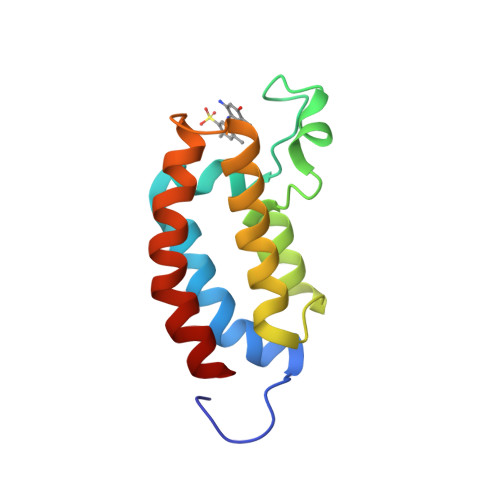GtoPdb is requesting financial support from commercial users. Please see our sustainability page for more information.
CREB binding lysine acetyltransferase
 Target has curated data in GtoImmuPdb
Target has curated data in GtoImmuPdb
Target id: 2734
Nomenclature: CREB binding lysine acetyltransferase
Contents:
Gene and Protein Information  |
||||||
| Species | TM | AA | Chromosomal Location | Gene Symbol | Gene Name | Reference |
| Human | - | 2442 | 16p13.3 | CREBBP | CREB binding lysine acetyltransferase | |
| Mouse | - | 2441 | 16 A1 | Crebbp | CREB binding protein | |
| Rat | - | 2444 | 10q12 | Crebbp | CREB binding lysine acetyltransferase | |
Previous and Unofficial Names  |
| CREB binding protein | RSTS | Rubinstein-Taybi syndrome |
Database Links  |
|
| Alphafold | Q92793 (Hs) |
| CATH/Gene3D | 1.10.1630.10, 1.20.1020.10, 1.20.920.10 |
| ChEMBL Target | CHEMBL5747 (Hs) |
| Ensembl Gene | ENSG00000005339 (Hs), ENSMUSG00000022521 (Mm), ENSRNOG00000005330 (Rn) |
| Entrez Gene | 1387 (Hs), 12914 (Mm), 54244 (Rn) |
| Human Protein Atlas | ENSG00000005339 (Hs) |
| KEGG Gene | hsa:1387 (Hs), mmu:12914 (Mm), rno:54244 (Rn) |
| OMIM | 600140 (Hs) |
| Pharos | Q92793 (Hs) |
| RefSeq Nucleotide | NM_004380 (Hs), NM_001025432 (Mm), NM_133381 (Rn) |
| RefSeq Protein | NP_004371 (Hs), NP_001020603 (Mm), NP_596872 (Rn) |
| SynPHARM |
79896 (in complex with ischemin) 79941 (in complex with SGC-CBP30) |
| UniProtKB | Q92793 (Hs) |
| Wikipedia | CREBBP (Hs) |
Selected 3D Structures  |
|||||||||||||

|
|
||||||||||||

|
|
||||||||||||

|
|
||||||||||||
Download all structure-activity data for this target as a CSV file 
| Activators | |||||||||||||||||||||||||||||||||||||||||||||||||||
| Key to terms and symbols | View all chemical structures | Click column headers to sort | |||||||||||||||||||||||||||||||||||||||||||||||||
|
|||||||||||||||||||||||||||||||||||||||||||||||||||
| Inhibitors | |||||||||||||||||||||||||||||||||||||||||||||||||||||||||||||||||||||||||||||||||||||||||||||||||||||||||||||||||||||||||||||||||||||||||||||||||||||||||||||||||||||||||||||||||||||||||||||||||||||||||||||||||||
| Key to terms and symbols | View all chemical structures | Click column headers to sort | |||||||||||||||||||||||||||||||||||||||||||||||||||||||||||||||||||||||||||||||||||||||||||||||||||||||||||||||||||||||||||||||||||||||||||||||||||||||||||||||||||||||||||||||||||||||||||||||||||||||||||||||||
|
|||||||||||||||||||||||||||||||||||||||||||||||||||||||||||||||||||||||||||||||||||||||||||||||||||||||||||||||||||||||||||||||||||||||||||||||||||||||||||||||||||||||||||||||||||||||||||||||||||||||||||||||||||
| Other Binding Ligands | |||||||||||||||||||||||||||||||||||||||||||||||||||||||||||||||||||||||||||||||||||
| Key to terms and symbols | Click column headers to sort | ||||||||||||||||||||||||||||||||||||||||||||||||||||||||||||||||||||||||||||||||||
|
|||||||||||||||||||||||||||||||||||||||||||||||||||||||||||||||||||||||||||||||||||
| Immunopharmacology Comments |
| CBP30, a selective CBP/p300 bromodomain inhibitor, suppresses human Th17 responses. PMID: 26261308 |
Clinically-Relevant Mutations and Pathophysiology 
|
||||||||||||||
|
||||||||||||||
|
||||||||||||||
|
||||||||||||||
References
1. Borah JC, Mujtaba S, Karakikes I, Zeng L, Muller M, Patel J, Moshkina N, Morohashi K, Zhang W, Gerona-Navarro G et al.. (2011) A small molecule binding to the coactivator CREB-binding protein blocks apoptosis in cardiomyocytes. Chem Biol, 18 (4): 531-41. [PMID:21513889]
2. Chatterjee S, Mizar P, Cassel R, Neidl R, Selvi BR, Mohankrishna DV, Vedamurthy BM, Schneider A, Bousiges O, Mathis C et al.. (2013) A novel activator of CBP/p300 acetyltransferases promotes neurogenesis and extends memory duration in adult mice. J Neurosci, 33 (26): 10698-712. [PMID:23804093]
3. Chen Z, Wang M, Wu D, Bai L, Xu T, Metwally H, Wang Y, McEachern D, Zhao L, Li R et al.. (2024) Discovery of CBPD-268 as an Exceptionally Potent and Orally Efficacious CBP/p300 PROTAC Degrader Capable of Achieving Tumor Regression. J Med Chem, 67 (7): 5275-5304. [PMID:38477974]
4. Chen Z, Wang M, Wu D, Zhao L, Metwally H, Jiang W, Wang Y, Bai L, McEachern D, Luo J et al.. (2024) Discovery of CBPD-409 as a Highly Potent, Selective, and Orally Efficacious CBP/p300 PROTAC Degrader for the Treatment of Advanced Prostate Cancer. J Med Chem, 67 (7): 5351-5372. [PMID:38530938]
5. Fedorov O, Lingard H, Wells C, Monteiro OP, Picaud S, Keates T, Yapp C, Philpott M, Martin SJ, Felletar I et al.. (2014) [1,2,4]triazolo[4,3-a]phthalazines: inhibitors of diverse bromodomains. J Med Chem, 57 (2): 462-76. [PMID:24313754]
6. Gallenkamp D, Gelato KA, Haendler B, Weinmann H. (2014) Bromodomains and their pharmacological inhibitors. ChemMedChem, 9 (3): 438-64. [PMID:24497428]
7. Romero FA, Murray J, Lai KW, Tsui V, Albrecht BK, An L, Beresini MH, de Leon Boenig G, Bronner SM, Chan EW et al.. (2017) GNE-781, A Highly Advanced Potent and Selective Bromodomain Inhibitor of Cyclic Adenosine Monophosphate Response Element Binding Protein, Binding Protein (CBP). J Med Chem, 60 (22): 9162-9183. [PMID:28892380]
8. Sachchidanand, Resnick-Silverman L, Yan S, Mutjaba S, Liu WJ, Zeng L, Manfredi JJ, Zhou MM. (2006) Target structure-based discovery of small molecules that block human p53 and CREB binding protein association. Chem Biol, 13 (1): 81-90. [PMID:16426974]
9. SGC. I-CBP112 A CREBBP/EP300-selective chemical probe. Accessed on 04/08/2023. Modified on 04/08/2023. thesgc.org, https://www.thesgc.org/chemical-probes/I-CBP112
10. Welti J, Sharp A, Brooks N, Yuan W, McNair C, Chand SN, Pal A, Figueiredo I, Riisnaes R, Gurel B et al.. (2021) Targeting the p300/CBP Axis in Lethal Prostate Cancer. Cancer Discov, 11 (5): 1118-1137. [PMID:33431496]
11. Xiang Q, Wang C, Wu T, Zhang C, Hu Q, Luo G, Hu J, Zhuang X, Zou L, Shen H et al.. (2022) Design, Synthesis, and Biological Evaluation of 1-(Indolizin-3-yl)ethan-1-ones as CBP Bromodomain Inhibitors for the Treatment of Prostate Cancer. J Med Chem, 65 (1): 785-810. [PMID:34962793]
How to cite this page
Non-enzymatic BRD containing proteins: CREB binding lysine acetyltransferase. Last modified on 16/06/2025. Accessed on 16/12/2025. IUPHAR/BPS Guide to PHARMACOLOGY, https://www.guidetoimmunopharmacology.org/GRAC/ObjectDisplayForward?objectId=2734.










